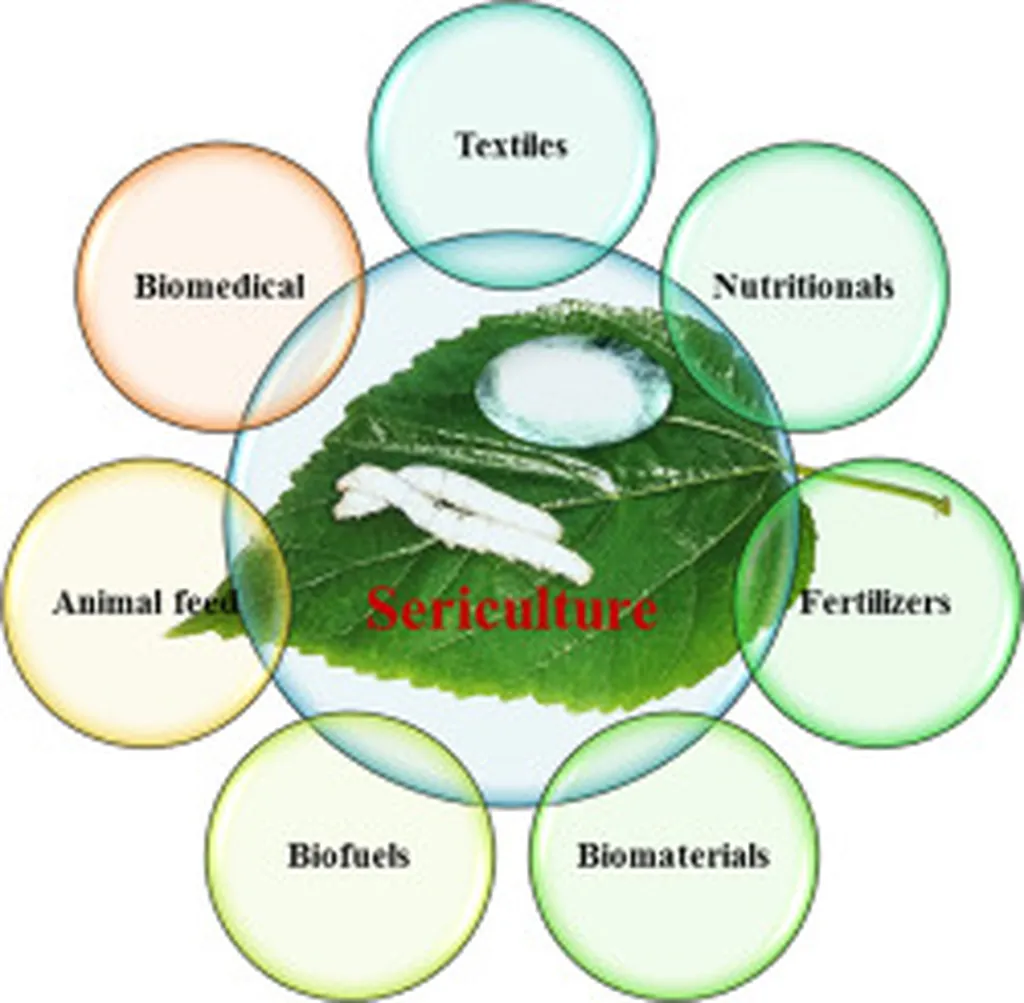In the heart of agritech innovation, a recent study published in *Scientific Papers Animal Science and Biotechnologies* is shedding light on the untapped potential of sericulture and moriculture by-products. Led by Roxana Nicoleta Lazăr, the research delves into the multifaceted applications of these often-overlooked resources, offering a promising outlook for the agriculture sector and beyond.
Sericulture, the practice of breeding silkworms for silk production, generates a wealth of by-products that extend far beyond the lustrous threads we associate with luxury fabrics. “Silk proteins, fibroin and sericin, have a significant impact in the medical and cosmetic fields, offering innovative solutions for tissue regeneration, skin care, and the development of advanced biomaterials,” explains Lazăr. These proteins are not only revolutionizing healthcare but also opening new avenues in sustainable agriculture.
One of the most compelling findings is the transformation of sericulture waste into organic fertilizers. This intelligent use of by-products contributes to improving soil fertility and supporting organic agriculture. As the global demand for sustainable farming practices grows, this discovery could be a game-changer for farmers looking to enhance their soil health while minimizing environmental impact.
Moreover, the silkworm chrysalis emerges as a high-quality protein source, rich in essential amino acids. This protein can be utilized in animal feed for poultry, pigs, and fish, as well as in the human food industry. “It has the potential to become a sustainable alternative to conventional proteins,” Lazăr notes. This could address the pressing need for sustainable protein sources in an era of climate change and resource scarcity.
Mulberry leaves, the primary food source for silkworms, also play a pivotal role in this ecosystem. Beyond their importance in sericulture, these leaves are valued in the pharmaceutical and food industries. Mulberries are appreciated for their nutritional value and health benefits, used to produce juices, jams, and other derived products. This versatility underscores the interconnectedness of sericulture and moriculture, offering a holistic approach to resource utilization.
The implications of this research are far-reaching. By valuing and efficiently managing the by-products of sericulture and moriculture, the agriculture sector can optimize production, increase sustainability, and add economic value. This study not only highlights the potential of these resources but also paves the way for future developments in sustainable agriculture and related industries.
As we stand on the brink of a new era in agritech, the insights from Lazăr’s research serve as a beacon of innovation. By embracing these findings, we can unlock the full potential of sericulture and moriculture, fostering a more sustainable and prosperous future for agriculture.

